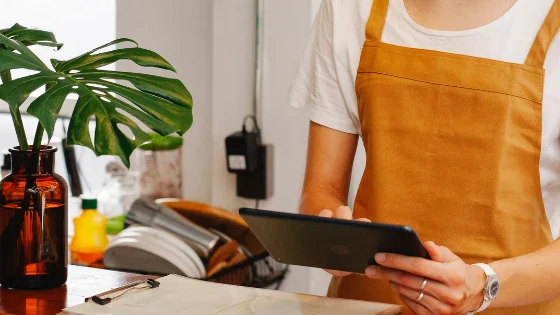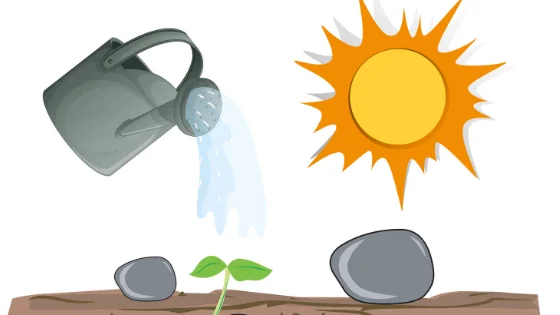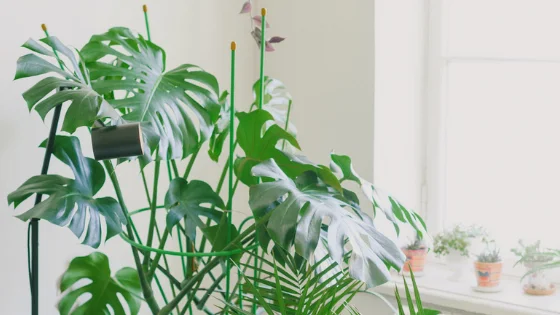Does Monstera Need Direct Sunlight? Not many of us know much about houseplants. If you do, fantastic! But if not, no need to worry! This article is great for beginners and will answer your question.
Table of Contents
Does Monstera Need Direct Sunlight?
When it comes to growing a beautiful, robust monstera, lighting is a critical component.
Bright, indirect sunlight is ideal for monsteras, who like to be near a window that isn’t directly exposed to the sun’s rays.
The ideal location for a monstera is typically near an east-facing window or a window that faces south. It’s possible that north-facing windows aren’t bright enough, but they’re still better than nothing. A west-facing window, on the other hand, can allow in too much scorching, direct afternoon sunlight.
Read More: Monstera Leaves Care – A Complete Guide
Is direct sunlight bad for Monstera?
Bright indirect light is ideal for your Monstera. Even under low-light settings, it can live, but its growth will be much slower than in bright indirect light. Avoid exposing your Monstera leaves to direct sunlight over long periods of time, since this might cause them to burn.
You may be wondering how Monsteras can thrive outdoors if direct sunlight harms them. Monsteras adjust to their light requirements as they grow. To provide your plant time to adapt, any alterations should be implemented gradually.
For best results, place your Monstera in a bright window and move it closer to the light ever week. A few hours of direct sunshine each day, preferably in the early morning or late evening, can ultimately help your plant adapt to its new environment.
You should never, ever leave your Monstera outside in the sun for the whole day. Monsteras grown outdoors need to be acclimated slowly and placed in a shaded location to avoid heat exhaustion.
In the summer, I see a lot of sad social media postings from plant parents who mistakenly fry their variegated Monstera plants by placing them outdoors for some sun and forgetting to cover them. Please do not allow yourself to be victimized in this manner!
Read More: Can Monstera Live In Low Light?
How much sunlight does a Monstera need?

Monstera can live in low light, but it requires bright indirect light in order to grow and flourish.. Because these phrases are relative, they might be difficult to understand. It’s difficult to pin down precisely what “bright” signifies.
Foot candles are a unit of measurement for light intensity. Using numerical light measurements is more precise and reliable than using relative terms.
It is recommended that you use a minimum of 75 to 100 foot candles for Monstera Deliciosa, with a suggested range of 200 to 500 feet. Monstera Adansonii and other Monstera varieties will thrive under the same conditions.
Direct sunlight, on the other hand, may reach as much as 10,000 foot candles on a clear day. Outdoor plants get 1000-2000 foot candles even when they are in complete shadow.
In order to obtain 1000-2000 foot candles, commercial greenhouses utilize shade cloths or very bright lights to keep their Monstera plants healthy and happy. These are the ideal light levels for Monstera to thrive.
In order to achieve greenhouse light level inside, either a specialized grow light or a very bright window must be used.
Read More: How much light does a monstera need?
Do variegated Monstera need more light?
The light requirements of variegated Monstera are greater than those of standard Monstera. This is due to the fact that the variegated parts of the leaves do not photosynthesize.
The plant’s energy is used by the variegated tissue, but no energy is produced in return. While they are visually appealing, variegated Monstera with a considerable degree of sectoral variegation (such as the half moon pattern) more attention when it comes to light care than other varieties.
For a variegated Monstera to reach the same growth rate as a standard Monstera, it has to be exposed to more light in order to compensate for the reduced growth rate.
The link between lighting and watering

Photosynthesis requires the presence of both light and water. The more light a plant receives, the more water it needs to flourish. Similar to this, when a plant receives less light, it consumes less water and the soil dries out at a slower rate.
Understanding this connection can assist you in determining how much water your Monstera will need.
It’s possible that you’ve heard that you should water your Monstera plants less often in the winter. This is due to the fact that plants use less water in the winter since there is less sunlight.
Assuming you have artificial lighting, your plant will not be affected by the winter darkness and you may continue watering as normal.
Read More: Can Monstera Grow In Shade?
Monstera grow lights
The most difficult aspect of growing Monstera plants is ensuring that they flourish in an environment in which they were not intended to grow. The good news is that even in the darkest of rooms, there are several ways to effectively cultivate a Monstera.
Regular lights vs. grow lights
Your home’s light bulbs do contribute to the growth of your plants, but not much. This is due to three factors.
- As a starting point, your house lights are located too far away to offer enough intensity. Because of the distance between a ceiling light and a floor or shelf plant, the plant only gets a small fraction of the light.
- Aside from that, the lights in a typical home are aimed in all directions. Your plant isn’t getting the majority of the light. Plants get greater advantage from bulbs that emit a concentrated, one-directional beam.
- It’s also important that the lights in your house are mostly in colors that plants can’t use. To get a light that seems white, it is necessary to use the whole visible light spectrum. Green and yellow are the most prominent hues in both natural sunlight and artificial light bulbs. Because the leaves of a plant are green, they reflect green light to our sight and absorb all other hues instead of reflecting them. It is because of this that plants utilize a lot of red and blue light.
Plants need a certain spectrum of light, which is readily available in grow light bulbs. Some only have red and blue light. Monstera will thrive under these lights, but the purple hue they produce may be unappealing to you.
Others, known as “balanced spectrum,” add some yellow and green light in order to provide a more natural-looking white color.
Position the grow light as near as possible to the leaves of your Monstera plant for optimal results. Instructions for the proper distance should be included with high-quality grow lights. Powerful grow lights may burn leaves much like the sun, so be sure to follow the instructions carefully!
Read More: Can Monstera Grow In Artificial Light?
Conclusion
Does Monstera Need Direct Sunlight?
A medium-to-bright indirect light is ideal for your Monstera plant. It is best for monsteras to grow in indirect sunlight and in a warm, moist climate with enough water.
Photo by Ksenia Chernaya from Pexels
Photo by Tim Douglas from Pexels


